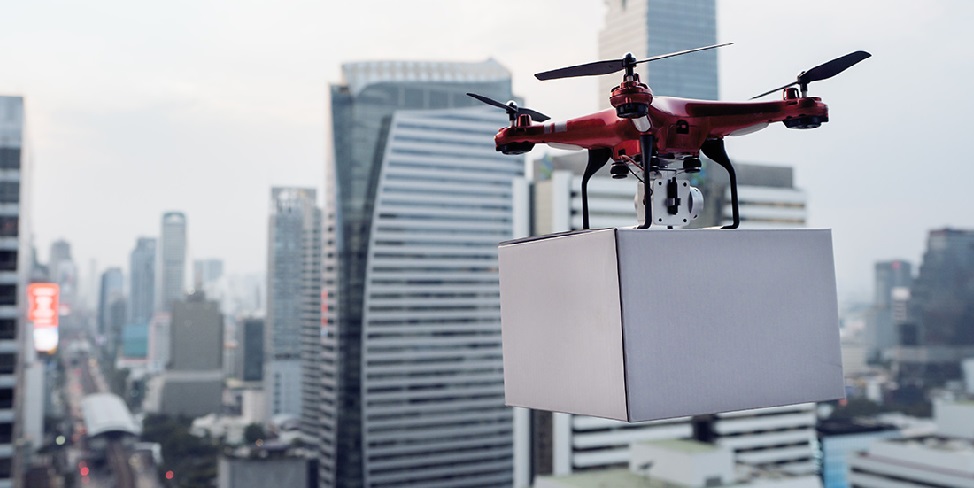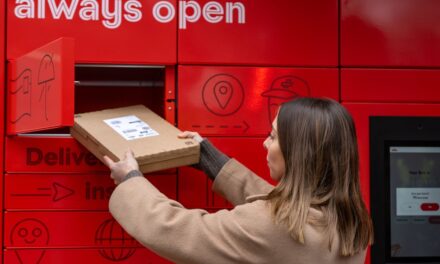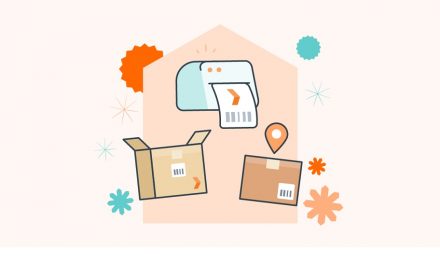
Why you should be a smart post office

What is a smart Post office? Why should you seriously consider being one? Where do you get started and how do you do it? Christoffer Augsburg, Growth Marketing Manager at e-Boks discusses.
Is the post office irrelevant?
The truth is the postal office the way we know it is close to irrelevance. Even before the onset of the pandemic, people did not want to go all the way to a post office or even a postbox to send a letter that would reach the recipient a hundred times longer than email or text, or a messaging app. Sentimentality, unfortunately, isn’t enough to sustain the billions of dollars and euros it needs to run the industry.
In the U.S. the postal service serves as a symbol of democracy. In rural cities as well as developing countries, it continues to serve as a lifeline and source of information and communication. However, sending posts via the postal service is not akin to listening to music on vinyl. It’s not a better way to conduct the transfer of information—and, unfortunately, more efficient ways are available. For purposes of this analogy and at the rate it is going, the postal industry is more a cassette tape.
For the postal industry to find its place in this century, the solution is simple: be smarter.
What Is a Smart Post Office?
Used in the same way other items and industries are considered “smart” these days, a smart post office integrates modern technology automation, the Internet of Things, real-time tracking to the overall efficiency of service. A smart system uses data and artificial intelligence to learn customer behavior, thereby eventually becoming predictive and adaptive smart.
The purpose of a smart post office is to streamline processes to allow employees and especially customers to focus on the core of business and service.
Examples of a smart system in the postal industry include:
- SingPost is an award-winning postal service whose range of features includes an online platform for 24/7 postal access, over 300 self-service kiosks, and the digitalization of postal operations.
- Itella-owned SmartPOST facilitates self-service post offices through a Delivery Point Solution (DPS).
- Deutsche Post has digitalized nearly all of its operations. Packstation, its parcels subsidiary, features automated self-service booths and self-service dispatching.
- Pakistan Post opened itself to franchising its digital post offices in 2020. This new post office digitizes old systems, features state-of-the-art technology, and offers integrated services, such as financial and payment schemes.
- Indian Post began centralizing services via a single digital platform in 2017. Ironically, it also created a digital solution to reach more rural areas, using a sim card-based network.
- Denmark’s Digital Post, which was set up with digital solutions provider e-Boks, is how the government corresponds with citizens 15 years old and up. Its launch was ambitious as it made digital conversion mandatory. Many years later, this Danish framework has been adopted by numerous countries worldwide.
A Short History of the Smart Post Office
It may not seem like it today, but the post system has always been a cornerstone of innovation. These days, when you think of technology, you think of Apple or Tesla or Virgin Galactic. But at some point, the post office was transformative in a practical way. Its innovations integrated themselves into the everyday life of the everyday consumer. Perhaps that’s why people overlooked them. It was an archaic form of digital transformation that benefitted both the customer and the system itself.
Back when letters and parcels were being delivered by horses or on foot, in the late 1800s, Scottish engineer William Murdoch developed a pneumatic system, using pressurized tubes to deliver letters. Many countries eventually copied it, including the USA in 1897.
According to The Week magazine:
The Post Office experimented with everything from stagecoaches to airplanes even pondered sending mail cross-country on a missile. For decades, the agency integrated new technologies, shifting to changing environments, underpinning its ability to deliver billions of pieces of mail every year, from the beaches of Miami to the banks of Alaska, for just cents per letter.
During World War II, the US Postal Service copied V-Mail from England. To avoid clogging up the postal services, family-written letters were scanned to hundreds of feet of microfilm, encased in a capsule, then shipped overseas. The letters would be printed onsite and given to the recipients.
But despite the early lead, the postal service began to lag before, trapped in a whirlwind of politics, costly failures, and speedier alternatives.
Like other forms of communication telegraph, telephone, mobile devices, and email—threatened the post’s existence, the postal services needed to adjust to available technology and consumer needs.
In 1971, the year the first email was sent, the USPS hired Peace Corps member and financial analyst Gene Johnson to study “futuristic mail services” via the USPS Advanced Services department. According to a Bloomberg article, his earlier efforts were slow—such as using fax to deliver letters or hiring postmen to disseminate telegrams. With pressure from government officials and tech companies perfecting email, Johnson’s group came up with Electronic Computer Originated Mail or E-COM. Reports Bloomberg:
The postal service’s largest customers, among them banks and insurance companies, already prepared most of their bills and account statements on computers. Rather than trucking mountains of printouts to nearby post offices, these large users would be able to transmit messages—either electronically or on reels of computer tape—to the USPS’s Sperry Rand Univac 1108 computer system in Middletown, Va. From there, the postal service would send the messages in the blink of an eye to post offices around the country, where clerks would print them out, seal them in envelopes, and pass them on to letter carriers who would deliver them to people’s homes along with their junk mail and packages.
Unfortunately, this “email with a stamp” still worked slowly. It lost $40 million and shut down in 1985. It was a failure that affected the USPS’ future strategies, including their reluctance to become more digital.
In 1993, USPS hired Robert Reisner to be its first chief president of technology applications. The Ivy-league graduate experimented with television shopping by allowing customers to order through their remote controls while USPS handled the delivery. It failed.
Reisner then installed 10,000 Internet-connected kiosks in post offices, but post office personnel were reluctant, making the process cumbersome. Reisner’s other solutions included a digital postmark that allowed email to be certified and a digital printing service where USPS could print out flyers and announcements and send them to addresses. To get ahead of electronic bills payment, the company bought an agency that opened envelopes with checks, scanned them, then sent them electronically to banks.
In the U.S. resistance barred these continued innovations. But the rest of the world was catching up, understanding that it wasn’t a matter of competing with available tech and alternatives, but putting them together with the existing system.
What Are the Qualities of a Smart Post Office?
Below are some examples of some of the qualities of a smart post office.
A Sense of Reinvention
A digitally transformed office listens to the tastes and needs of its consumers, sometimes in real-time. You must be flexible with a “refuse to settle” mentality that will allow you to pivot quickly to the demands of the time.
Technological Competence
Technology is a big player in the game these days. However, hiring the latest breakthroughs in machinery and data only plays a fraction in tech’s significance. Understanding how these technologies work will help you apply them more efficiently and effectively. It’s also more cost-effective if you know how to analyze how these software programs and hardware can be best adapted to your context.
An Intimate Knowledge of Your Customer Base
Do not develop strategies based on what you think your customers want, but what they do want. For example, millennials are quickly taking up the consumer space, edging out boomers. Studies have shown that millennials are loyal to efficiency and convenience rather than a particular company. They prefer integrated services and brands that value social, ethical, and environmental issues.
Enter big data. It allows you to get an insight into your customers’ behaviors and preferences and act accordingly.
Security and Accountability
Going digital has only improved the security of the postal system, but it’s integral to keep this up-to-date constantly to sustain customers’ trust. As you are privy to sensitive information, being accountable for any lags in the system, privacy or otherwise, is essential to protect your reputation.
Streamlined Backend
Digitally transformed enterprises constantly wax poetic over positive user experiences, but for customers to be satisfied with your service, you must have a streamlined, organized system. A finely tuned back end will reflect efficiency on the front end.
How Can You Be a Smart Post Office?
Deloitte’s study “Creating a Smart Post Office appealing to Millennials Insights from a Digital-native,” puts the answer to this question is rather simplistic terms: you need to meet the high expectations of millennials, who are “digital natives, fast-moving, and always on.” Cater to their whims while taking into account flexibility for other customer bases will create the smart post office you need.
Apply technology that could be accessed anywhere and any time
Millennials don’t want to wait. They don’t want to wait till 9 a.m. when they have time today at 10:30 p.m. to do their postal errands. Thus, it is necessary to be available on-demand and in real-time. Ensure you’re on their smartphones, tablets, and other mobile devices. Integrate yourself in every aspect of their lifestyle, so they see your relevance.
Marry offline with the online
That millennials are an all-digital generation is not a hundred percent accurate. They are, after all, a set of people who love retro and nostalgia—but only the ones they don’t deem inefficient. According to Deloitte’s insights, going offline is not an issue for millennials so long as it does not trouble them. They don’t want to spend hours in line to purchase a stamp. An example that Deloitte gives is to track orders and pick-ups in real-time, giving customers online notifications so waiting is eliminated or, at the very least, diminished. Other ways to make “offline” more appealing? Offer interactive services, gamification, or entertainment.
Create a personalized experience
Suggest solutions based on their history. Create a personal greeting or note of thanks when they enter and exit the premises. Come up with an integrated plan, an all-in-one service that they’ll depend on for their post and parcel needs.
Make the trip to the office worthwhile. It should be a journey worth taking.
Find a way to insert social media in the picture
Social media has numerous uses. In 2011, for example, Deutsche Post launched “My Social Memories” on Facebook. It compiled user’s social network data and paired it with photos and infographics; users could enjoy it as a digital album or a hard copy. Not only did it touch on emotions, but it also allowed Deutsche Post to glean volumes of insights on their customers, creating highly customized strategies.
Millennials love promoting brands and services that they love on their social network. It is something you can also use to your advantage.
Come up with contactless solutions
In the age of the pandemic, face-to-face communications have become severely limited. To address these limitations, another award-winning postal service, Emirates Post, activated “contactless deliveries” and “contactless transactions.” It also increased its parcel fleet to accommodate e-commerce growth. This push also stimulated more efficiency.
Employ secure digital services
Make the transition easier by hiring a digital services provider to accomplish your digital transformation with an existing but flexible framework. We at e-Boks facilitated the conversions of the postal services in Denmark, Ireland, Sweden, Iceland, and many more.
e-Boks offers numerous services including digital postboxes (a secure mail and messaging platform that is closed and encrypted, preventing spam, phishing, and unsolicited conversations), e-signatures (safe, protected, and convenient), digital payments (billing still takes up a big chunk of postal industry), a portal solution (giving your customers easy communication access as well quickly amalgamating various services). You’ll never get a smarter postal service.
Partner with e-Boks now and find ways to push the postal industry into evolution.












